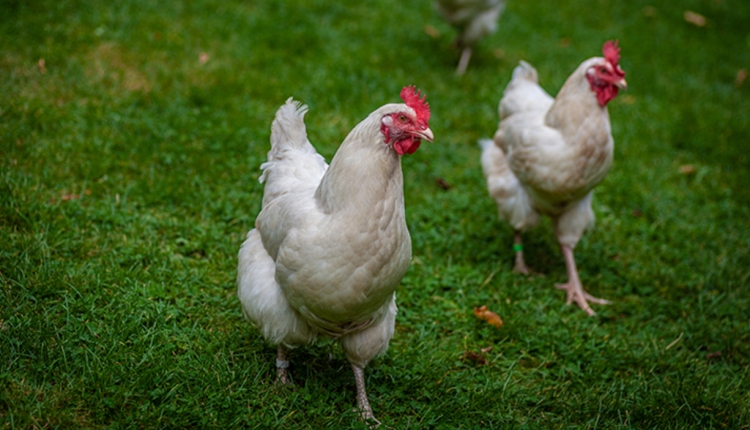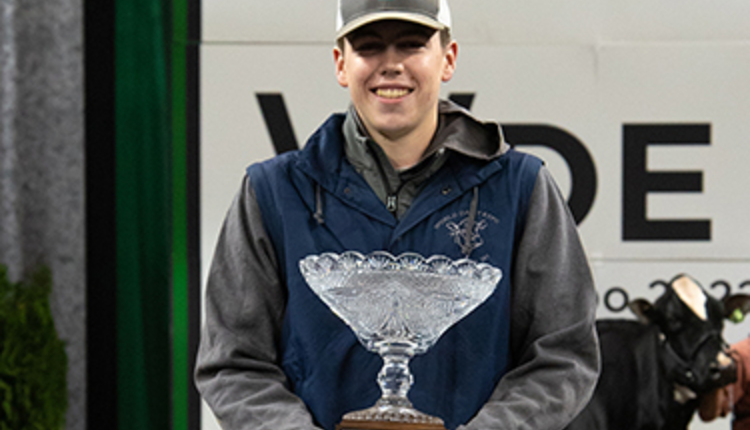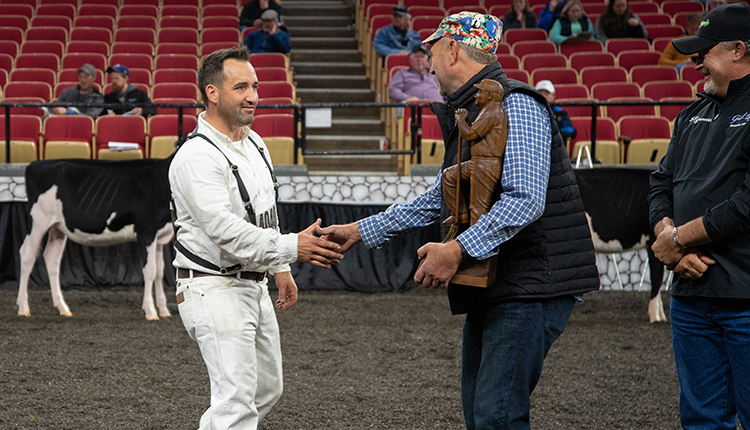While all the research conducted by the world's animal scientists is geared towards building a better agricultural system, it's important for everyone to remember that ultimately our number one goal is to produce food for the human race.
While dairy exports have been a buzzword these days, we still have a great deal of upside right here at home.
"If Americans ate to USDA's dairy guidelines, we'd have to produce twice as many dairy products," Juan Tricarico of the Dairy Research Institute reminded attendees at a symposium featuring presenters from all the major food animal species.
At the same time, global opportunities are boundless. "The largest migration in human history is taking place," he went on to say. "By 2050, 70 percent of the world's population will live in cities."
While that movement will provide opportunities for those in agriculture, "it will also present an ongoing communication challenge," explained Tricarico. "All animal food industries have a huge need to be clear, transparent and proactive when talking to consumers."
And "clear" is one of the key words in that discussion. "Access to information in the information-overload era is still difficult," Tricarico went onto explain to JAM attendees.
On the animal science front, here were some other important takeaways.
On calves
"Preweaned calves allot 86 percent of their day to lying. Lying time drops 4 minutes daily for each day of age after birth," said Ken Leslie from the University of Guelph, noting the trend continues through weaning.
"Calves lie down more when sick. A young calf lies down 86 percent of the day. Fever adds 45 minutes per day," he went on to explain. "When designing group housing, be sure to design housing that allows for 75 to 85 percent of calves lying at one time," Leslie noted because calves lie down often early in life.
On genetics
The dairy cow is perhaps the world's most studied domestic animal. In ongoing genome work, the University of Guelph's Bonnie Mallard shared, "Preliminary lameness data indicates that 23 percent of high immune responders infectious digital dermatitis compared to 50 percent for the low group of immune responders."
Meanwhile, the University of Vermont's David Kerr reported, "The best genetic cows cleared an E. coli infection (mastitis) in 2 to 3 days, while the worst cows needed 8 to 10 days."
On composted bedded pack barns
"There is more opportunity to mess up a compost bedded pack barn than a free stall barn," stated University of Kentucky's Jeffrey Bewley. He went on to explain that there are 80 such barns in Kentucky with 10 more underway in the state with 750 active dairy operations. "On the plus side, compost barns are 60 percent of the cost of freestall barns. The drawback? Securing enough sawdust," he noted.
Despite all this, it's important to note, "Today's compost bedded pack barn is not your grandfather's bedded pack barn. When managed well, it is a great way to house dairy cattle."
Lastly, we all must remember the importance of water. A good reminder from Michigan State's David Beebe, "Water is the most essential nutrient supplied to dairy cattle."

The author is the managing editor, and he brings 19 years of industry leadership to our readers overseeing all editorial content and production of the magazine. His degree from the University of Wisconsin-Madison combined dairy science and agricultural economics.
While dairy exports have been a buzzword these days, we still have a great deal of upside right here at home.
"If Americans ate to USDA's dairy guidelines, we'd have to produce twice as many dairy products," Juan Tricarico of the Dairy Research Institute reminded attendees at a symposium featuring presenters from all the major food animal species.
At the same time, global opportunities are boundless. "The largest migration in human history is taking place," he went on to say. "By 2050, 70 percent of the world's population will live in cities."
While that movement will provide opportunities for those in agriculture, "it will also present an ongoing communication challenge," explained Tricarico. "All animal food industries have a huge need to be clear, transparent and proactive when talking to consumers."
And "clear" is one of the key words in that discussion. "Access to information in the information-overload era is still difficult," Tricarico went onto explain to JAM attendees.
On the animal science front, here were some other important takeaways.
On calves
"Preweaned calves allot 86 percent of their day to lying. Lying time drops 4 minutes daily for each day of age after birth," said Ken Leslie from the University of Guelph, noting the trend continues through weaning.
"Calves lie down more when sick. A young calf lies down 86 percent of the day. Fever adds 45 minutes per day," he went on to explain. "When designing group housing, be sure to design housing that allows for 75 to 85 percent of calves lying at one time," Leslie noted because calves lie down often early in life.
On genetics
The dairy cow is perhaps the world's most studied domestic animal. In ongoing genome work, the University of Guelph's Bonnie Mallard shared, "Preliminary lameness data indicates that 23 percent of high immune responders infectious digital dermatitis compared to 50 percent for the low group of immune responders."
Meanwhile, the University of Vermont's David Kerr reported, "The best genetic cows cleared an E. coli infection (mastitis) in 2 to 3 days, while the worst cows needed 8 to 10 days."
On composted bedded pack barns
"There is more opportunity to mess up a compost bedded pack barn than a free stall barn," stated University of Kentucky's Jeffrey Bewley. He went on to explain that there are 80 such barns in Kentucky with 10 more underway in the state with 750 active dairy operations. "On the plus side, compost barns are 60 percent of the cost of freestall barns. The drawback? Securing enough sawdust," he noted.
Despite all this, it's important to note, "Today's compost bedded pack barn is not your grandfather's bedded pack barn. When managed well, it is a great way to house dairy cattle."
Lastly, we all must remember the importance of water. A good reminder from Michigan State's David Beebe, "Water is the most essential nutrient supplied to dairy cattle."

The author is the managing editor, and he brings 19 years of industry leadership to our readers overseeing all editorial content and production of the magazine. His degree from the University of Wisconsin-Madison combined dairy science and agricultural economics.








